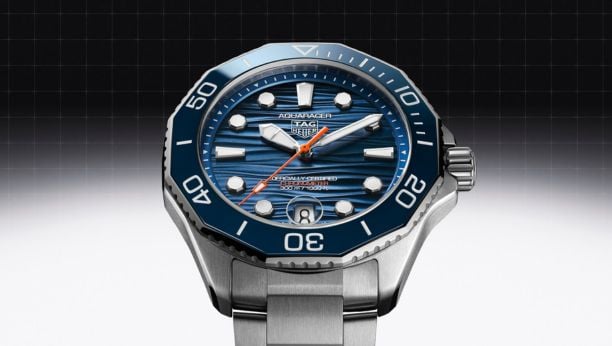VINTAGE COLLECTION
TAG HEUER TARGA FLORIO
The TAG Heuer Targa Florio chronograph, in its various executions, drew inspiration from three distinct sources – it paid tribute to the famous Sicilian road race and the legendary driver, Juan Manuel Fangio, while the design of the chronograph was based on the “Flieger” chronograph that Heuer produced for pilots in the 1930s. Effectively combining these sources of inspiration, the Targa Florio chronograph has a very distinctive style, with a very different look than any other chronograph produced by TAG Heuer.
The TAG Heuer Targa Florio was released in 2001 and marketed as tribute to the famous Italian road race that was part of the World Sportscar Championship from 1955 to 1973. With there being no specific chronograph associated with the Targa Florio road race, the TAG Heuer chronograph drew its inspiration from the distinctive “Flieger” (German for “pilot”) chronographs sold by Heuer in the mid-to-late 1930s.
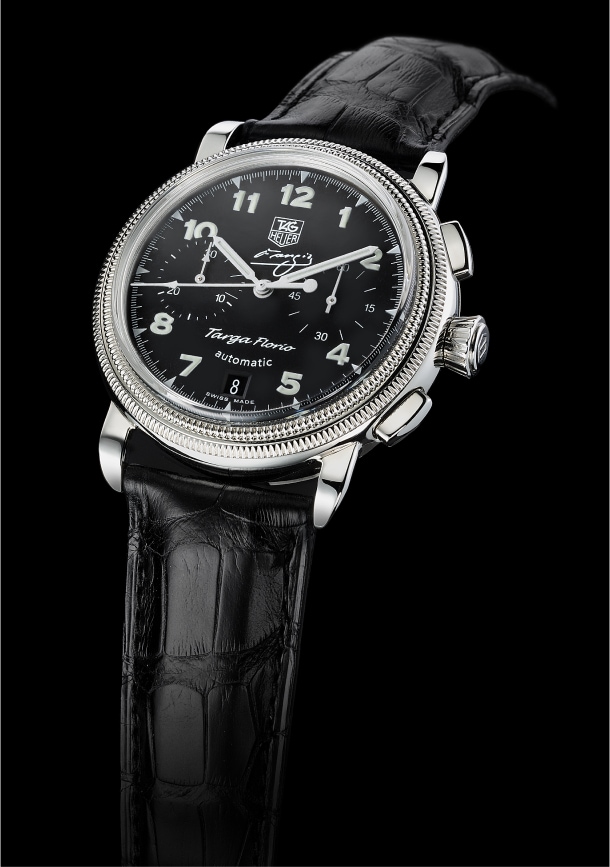
The Targa Florio was one of three new re-edition watches that TAG Heuer introduced as part of the “Classics” series. The highest profile of these 2001 releases was the midnight blue TAG Heuer Monaco in the Steve McQueen colours; up until that point, the Monaco re-issues from the late 1990s had only been available in black and silver. Alongside the new blue Monaco was the Calibre 36 version of the TAG Heuer Monza (the El Primero movement) and the Targa Florio.
The official press release at the time described the Targa Florio as follows:
“In a complete revival of the timepiece worn by the F1 world champion Juan-Manuel Fangio, the new generation Targa Florio is faithful to its predecessor in its contemporary feel. It’s clean, black dial and seconds and minute counters make for a subtle, yet striking timepiece. The Targa Florio chronograph is available with a brown or black leather strap for a sporty look or an alligator strap for sophisticated chic”
THE TARGA FLORIO ROAD RACE
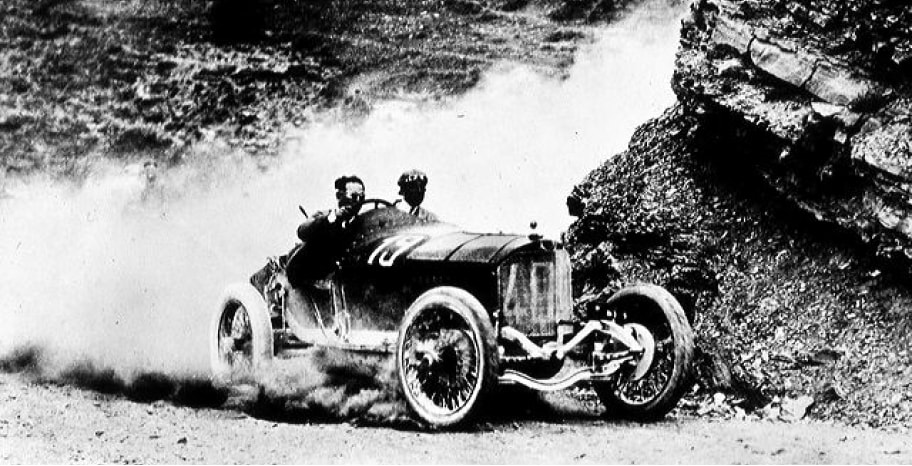
The Targa Florio was an endurance road race that was first held in the mountains of Sicily in 1906. Created by wealthy enthusiast Vincenzo Florio, the Targa (meaning “Plate” or “Shield”) was the most prestigious motor race in the world in its early years, pre-dating the Formula One World Championship by close to 50 years. The race itself was held over a course that varied in distance, but was usually more than 70 kilometers long and wound its way through the villages around Palermo. Winners of the race included, Tazio Nuvolari (in 1931 and 1932), Stirling Moss (in 1955, driving a Mercedes-Benz 300 SLR) and in 1970, the Heuer-sponsored Jo Siffert (driving a Porsche 908/03, with Brian Redman). While TAG Heuer promoted the Targa Florio chronograph with the image of Juan Manuel Fangio, he would never win the race, finishing second to his team-mate Moss in 1955.
Eventually the cars out-grew the circuit and safety concerns led to the race losing its Sports Car World Championship status in 1973 and its cancellation all-together in 1977.
THE INSPIRATION
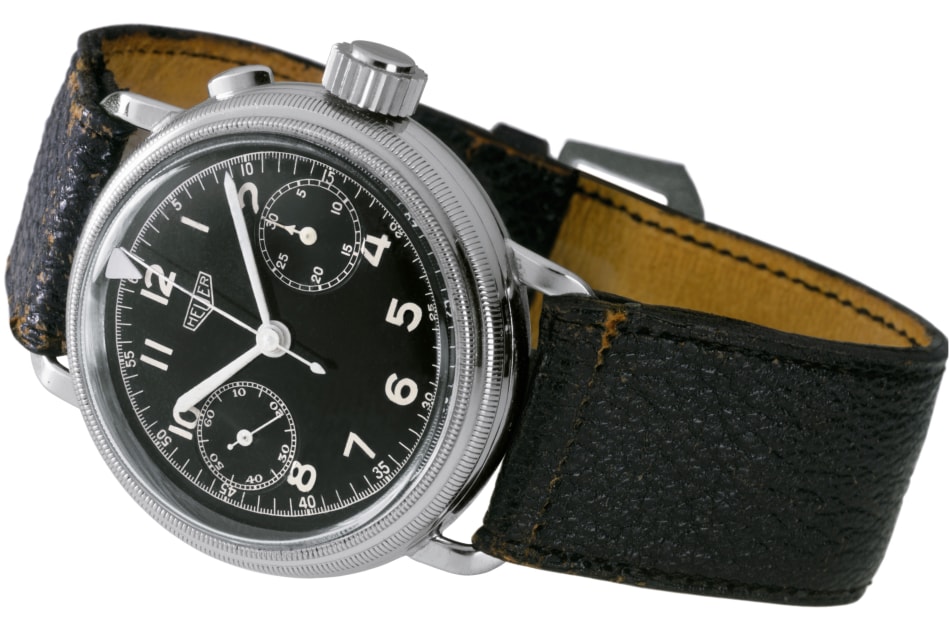
The inspiration for the design of the TAG Heuer Targa Florio was the series of “Flieger” chronographs sold by Heuer in the 1930s. The Flieger chronographs were introduced circa 1935, first with a single chronograph pusher (for start / stop / reset) and later with two pushers (allowing for a time-out / time-in function). There are many similarities between the Flieger chronographs and the Targa Florio -- the coin-edge bezel, the bold white numerals at each hour (including the chrono sub-dial overlapping the “10” and the “2”), the over-sized crown and the shape of the chronograph pushers are all a close match.
Despite this, there was no direct connection between the original Heuer “Flieger” and motor racing, although we can assume that the rugged build and legibility that make the watch ideal for a pilot would also be valued by the automobile racer or navigator.
TARGA FLORIO RE-EDITION (REF. CX2110)
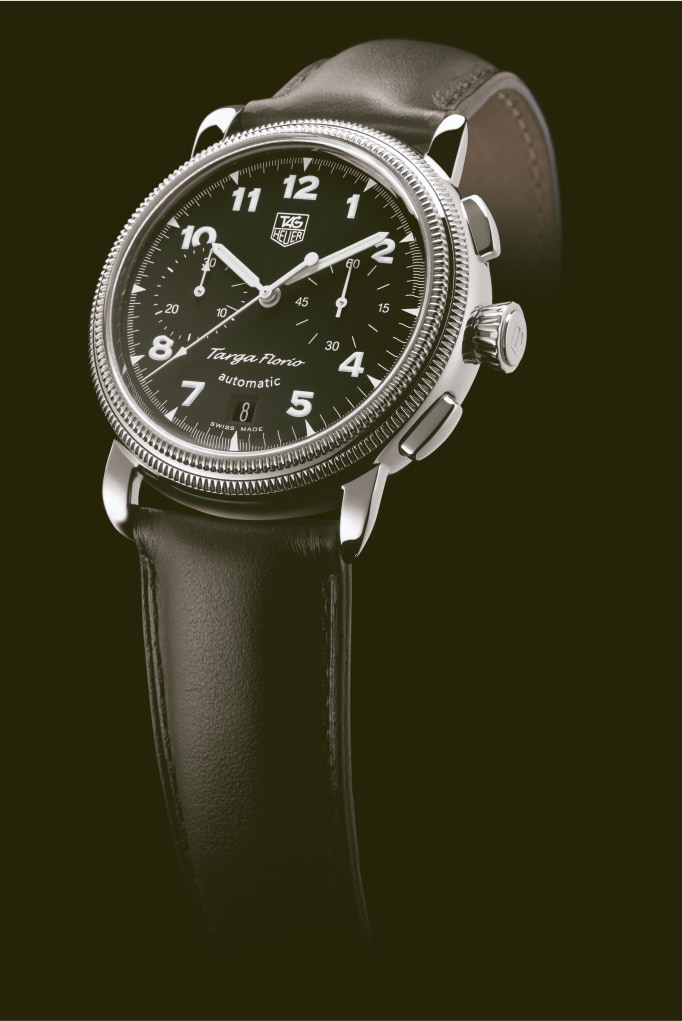
The first Targa Florio, reference CX2110, pictured above, was powered by a Calibre 17 (ETA 2894-2) automatic movement and featured a plexi-glass crystal. Later in the model-life, this plexi-glass was replaced by sapphire crystal, as it would also be on the 1957 Limited edition model.
The standard model with the sapphire crystal model has the reference CX2112.
The TAG Heuer Targa Florio adds a date window at 6 o’clock, whereas the “Flieger”, like all chronographs of the 1930s, did not offer this feature.
LIMITED EDITION TARGA FLORIO (REF. CX2113)
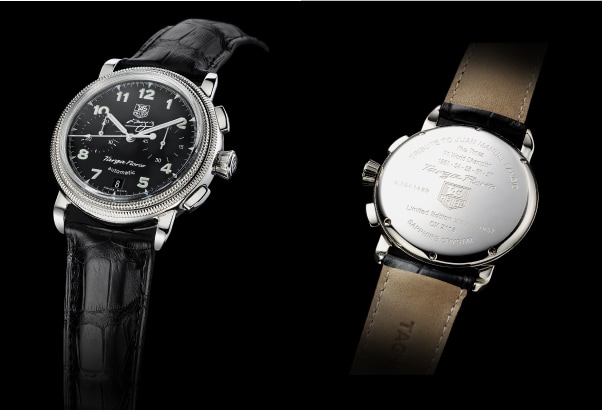
Around 2003 TAG Heuer released a limited edition Juan Manuel Fangio Targa Florio that was limited to 1,957 watches, the year that Fangio won the last of his five Formula One World Championships, this time driving for Maserati.
The 1957 watch, reference CX2113, is shown above and is mostly the same as the standard CX2110 edition, except for the following:
• Sapphire crystal instead of plexi-glass
• Fangio’s signature on the dial below the TAG Heuer shield
• Number of each watch engraved on the back
ARGENTINA SPECIAL TARGA FLORIO (REF. CX2111)
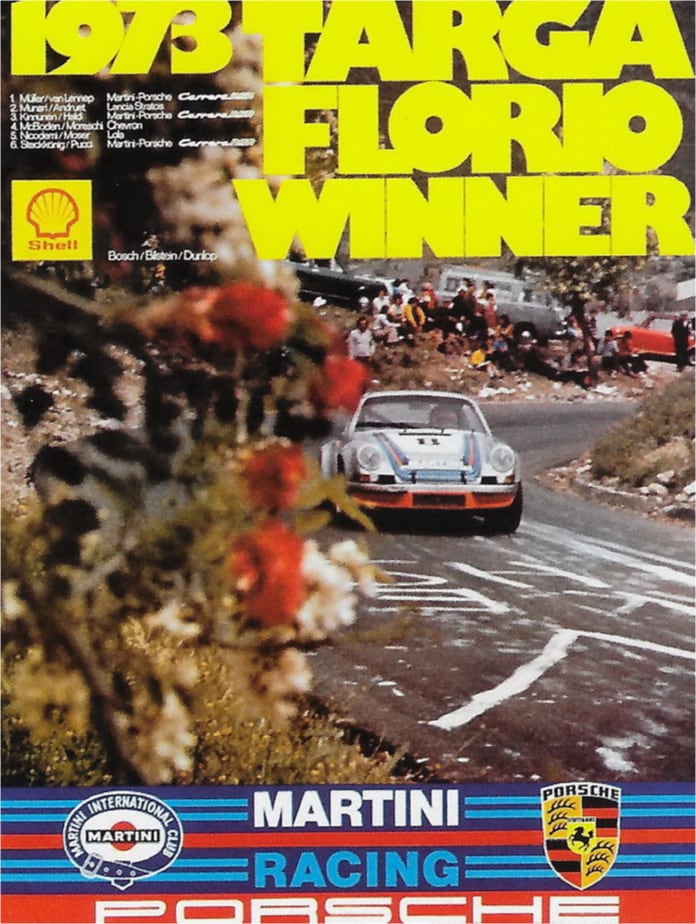
Not to be confused with the limited edition of 1,957 watches, TAG Heuer also released a second Juan Manuel Fangio limited edition- this time of just 200 watches that were available only in Argentina (Ref. CX2111).
This Fangio limited edition did not have his signature on the dial of the watch, and so is basically identical to the original CX2110. It did come with a specially engraved case-back and a special tribute book.



